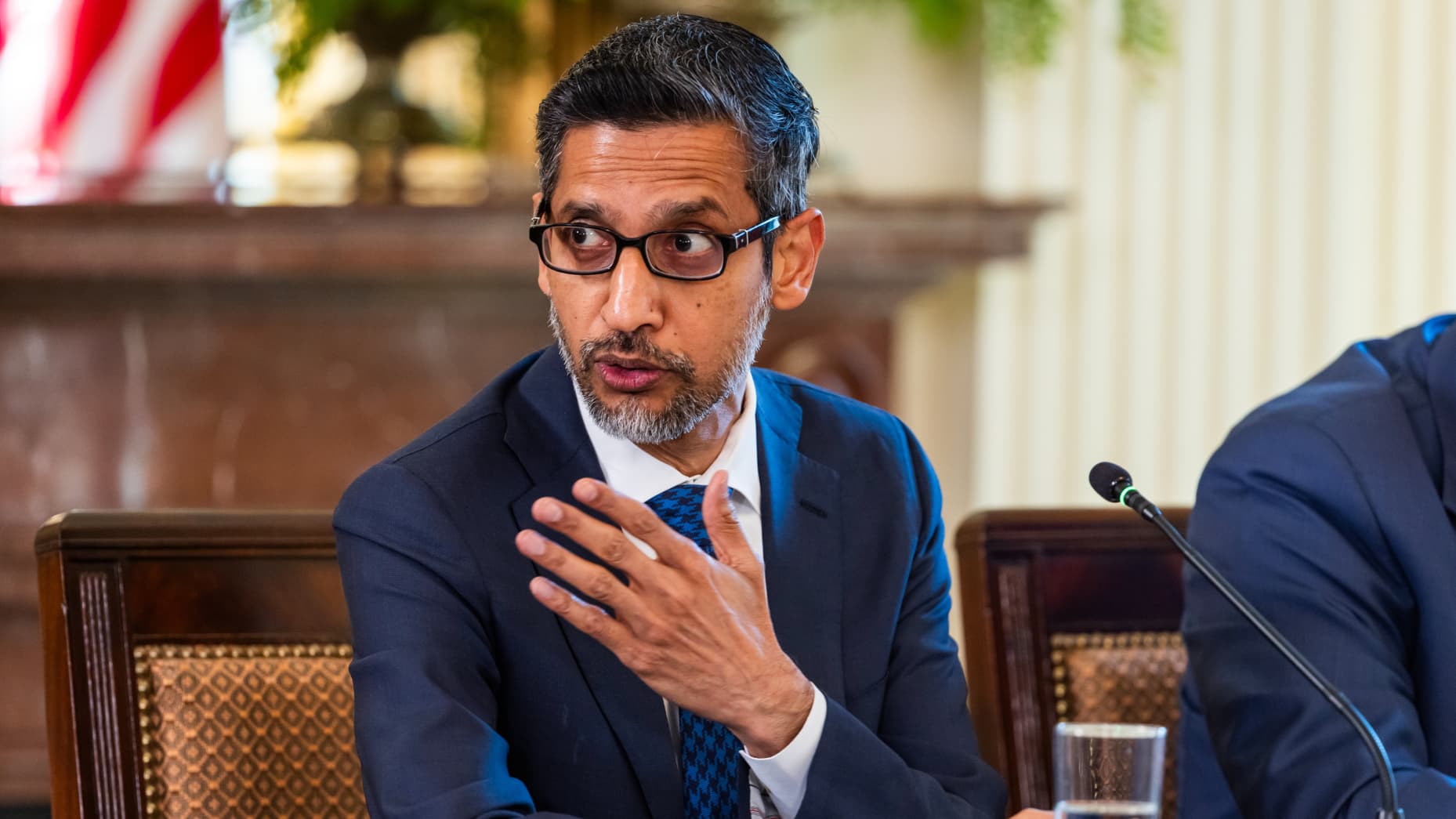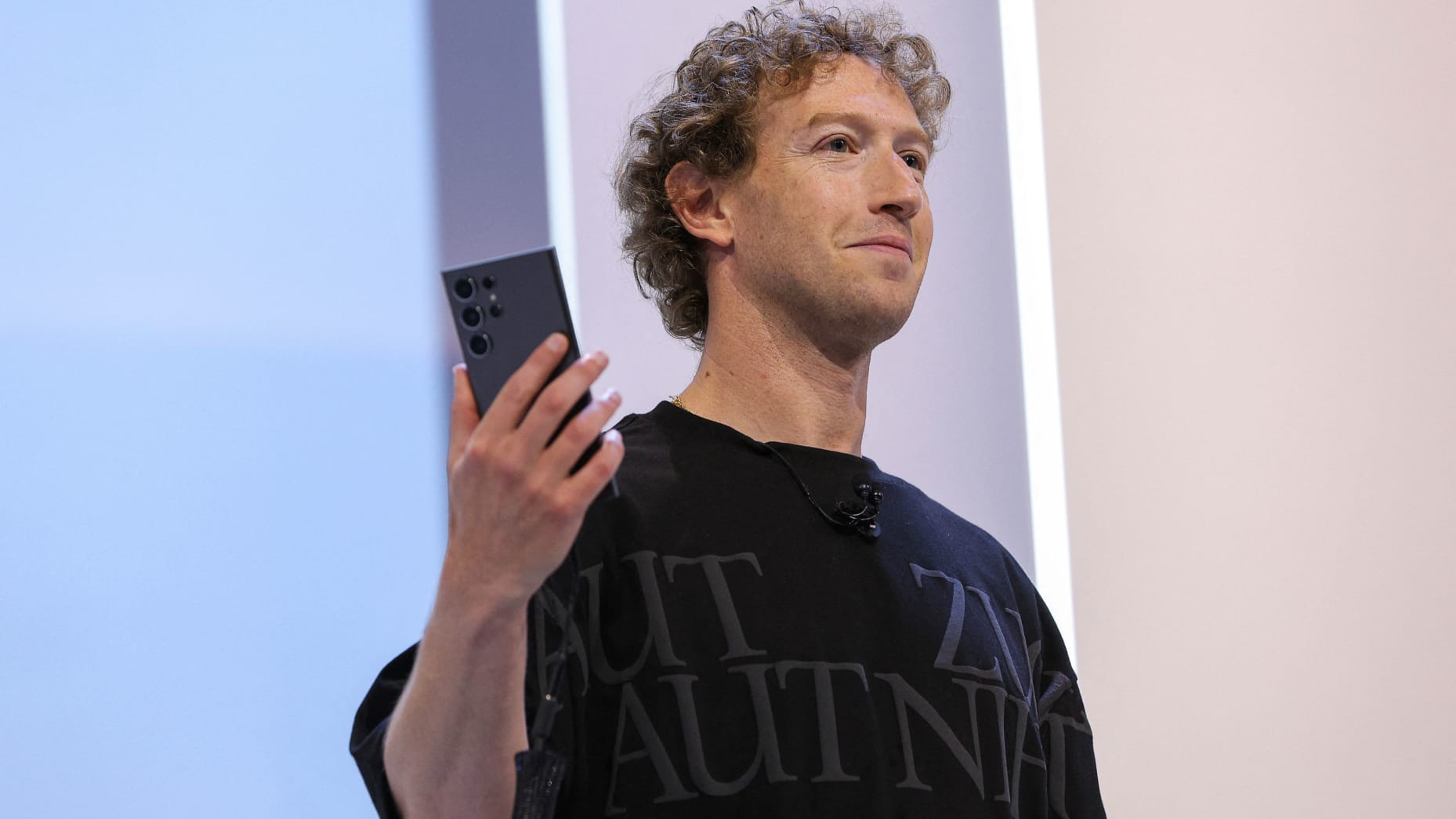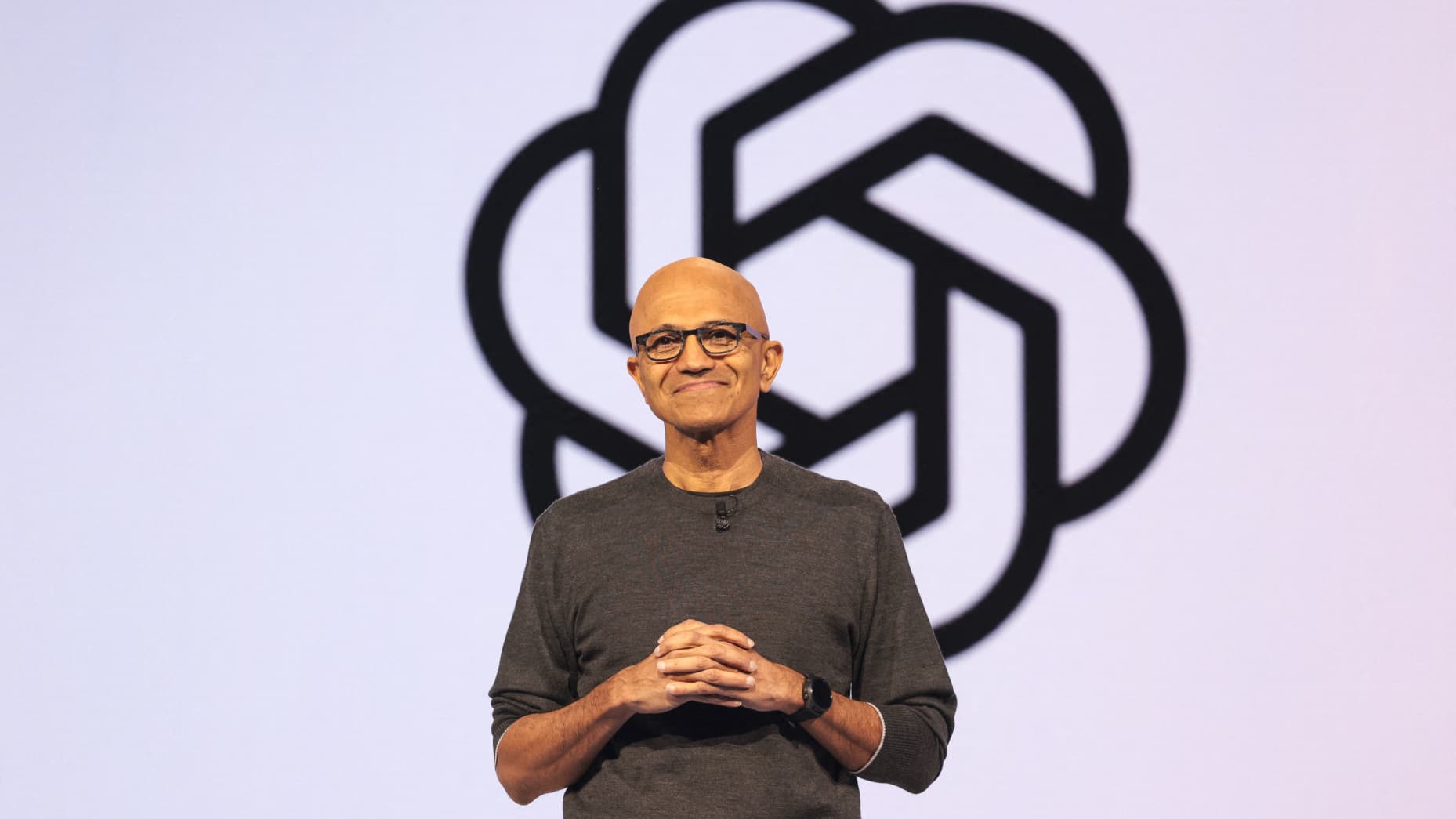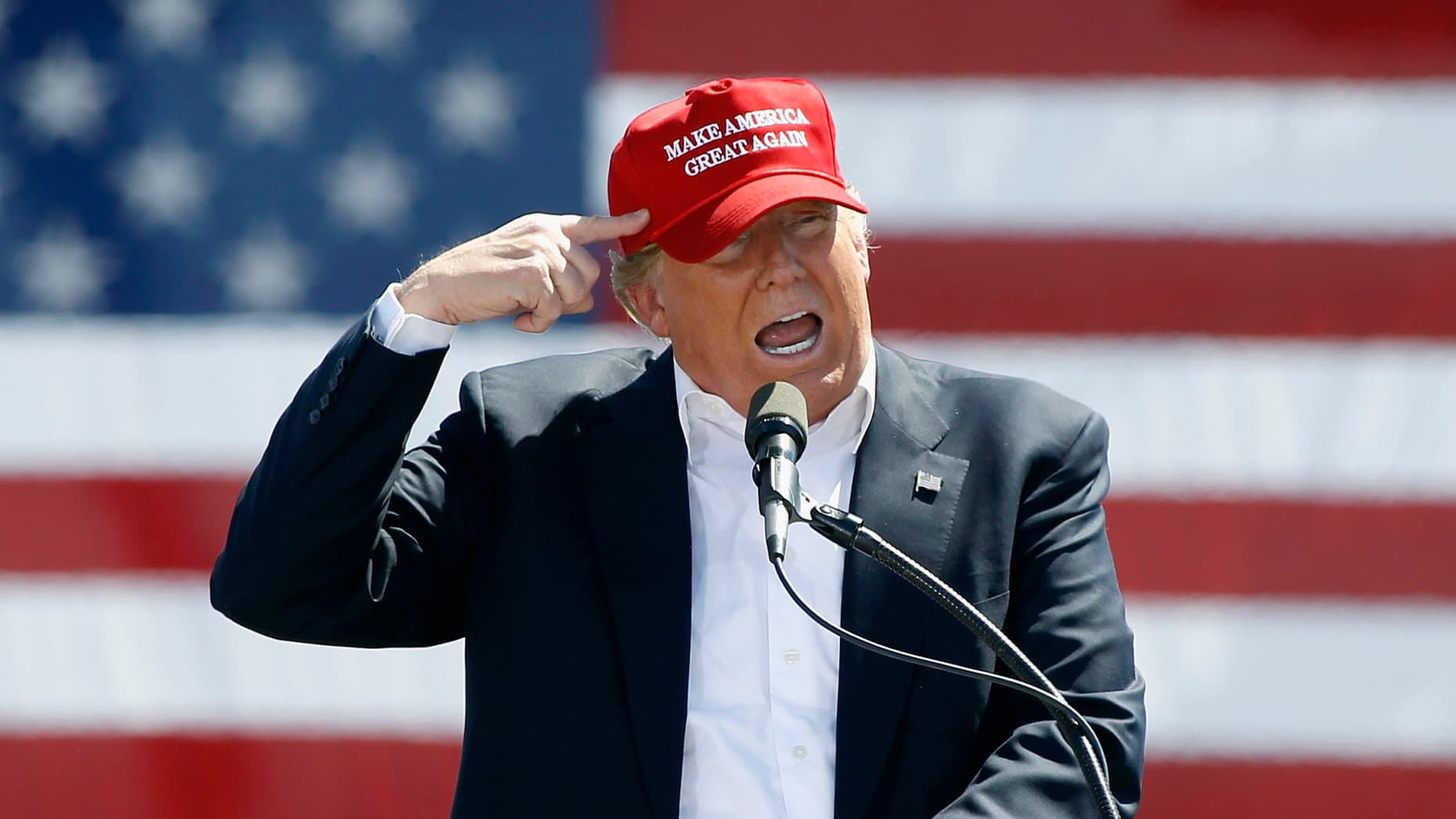A White House dinner with technology leaders highlighted a pivotal moment for Alphabet as it navigates antitrust scrutiny while the U.S. central government steers a rapid expansion of artificial intelligence policy. Sundar Pichai, Alphabet’s chief executive, joined other tech executives in a high-profile discussion at a White House event focused on AI education and industry leadership. The gathering occurred amid a backdrop of a landmark antitrust ruling that reshaped the competitive landscape for Google’s core search business, and as the administration promotes a sweeping AI action plan designed to accelerate innovation, expand AI infrastructure, and assert U.S. leadership on the global stage. Against this backdrop, Google’s leadership tone and strategic posture revealed a careful balance between regulatory negotiation, public policy alignment, and the rapid deployment of AI technologies. The conversations at the dinner and at the related White House events shed light on how Alphabet intends to engage with policymakers while pursuing its strategic objectives in a quickly evolving digital economy. This article delves into the intertwined developments: the antitrust outcome, the market and leadership responses, the administration’s AI policy framework, ongoing legal proceedings, and the broader implications for Google and the tech sector.
Alphabet Antitrust Ruling and Market Trajectory
A long-running antitrust case against Google, part of a broader federal action by the U.S. Department of Justice, culminated in a ruling that shaped Alphabet’s corporate strategy and investor sentiment. The case, initially filed in 2020, asserted that Google held an illegal monopoly in its core market of internet search, a binary finding that informed the government’s pursuit of structural remedies or other penalties. The latest decision, delivered by U.S. District Judge Amit Mehta, declined the most severe remedies proposed by the DOJ, effectively avoiding a breakup of Google’s core business operations. The court’s decision did not entirely exonerate Google, but it provided a measure of relief for the company while sustaining the DOJ’s view that certain competitive practices warranted scrutiny and potential reform. In the days following the ruling, Alphabet’s market performance reflected relief and recalibration; investors welcomed the outcome, and the company’s shares rose on the prospect of maintaining its integrated business model without forced divestitures that could disrupt its ecosystem.
The financial impact of the ruling extended beyond the court’s formal decision. Alphabet added approximately $230 billion to its market capitalization in the wake of the ruling, a sizable vote of confidence from investors who weighed the likelihood of continued dominance in search with the potential for heightened regulatory clarity. The magnitude of the market reaction underscored a broader: investors often reward legal predictability and long-term strategy that align with scalable platforms, even amid ongoing regulatory risk. In the immediate aftermath, Google’s leadership publicly acknowledged the protracted nature of antitrust proceedings, emphasizing that the process had been “a long one,” and expressing appreciation for what was already achieved through constructive dialogue. Sundar Pichai’s measured response at the table—acknowledging the resolution and the dialogue—was met with laughter and a sense of relief among attendees, signaling a moment of cautious optimism in a complex regulatory environment.
The ruling’s practical implications extend into Google’s ongoing strategic posture. By avoiding a breakup, Google preserved its integrated suite of services and its ability to leverage network effects across its core products—and by extension, it safeguarded a platform whose value is amplified by scale, data, and complementary services. Yet the decision did not settle all antitrust concerns; it signaled that regulatory authorities remain vigilant and prepared to pursue targeted remedies or behavioral constraints if evidence of anti-competitive conduct persists. In this context, the administration’s broader antitrust and competition posture continues to influence Alphabet’s strategic calculations. Executives recognize that the convergence of technology leadership with regulatory oversight will shape product development, data practices, and market positioning for years to come. The antitrust ruling thus stands not as a standalone milestone but as a catalyst for ongoing policy engagement, internal governance refinements, and a disciplined approach to innovation.
At the dinner and in the surrounding discourse, Pichai highlighted the importance of maintaining leadership in the AI era while ensuring that policy considerations align with American competitiveness. He framed the moment as part of a longer arc in which the United States seeks to sustain its edge in technology, while acknowledging the role government policy must play in shaping the pace and direction of innovation. Trump’s remarks during the meal underscored the political optics of the moment, as he acknowledged Alphabet’s “very good day” and the broader implications of the antitrust decision for American tech leadership. The exchange appeared to blend celebratory sentiment with a sober recognition of regulatory accountability, a combination that has characterized high-stakes public-private interactions in the technology sector for several years. The underlying tension—between rapid technological advancement and the need for careful regulatory oversight—was evident in the remarks and the atmosphere around the table.
Looking ahead, Alphabet’s leadership is likely to navigate a landscape where antitrust concerns remain salient even as the company seeks to capitalize on continued AI-driven growth. The company’s response to the ruling—emphasizing constructive dialogue, ensuring compliance, and pursuing strategic investments in AI and related infrastructure—will shape its ability to sustain momentum, attract talent, and maintain investor confidence. The judicial outcome notwithstanding, the broader policy environment remains dynamic, with the administration’s AI plan serving as a framework for how the United States intends to balance innovation, security, and global competitiveness. The antitrust decision and the market’s reaction thus form a dual lens through which Alphabet’s near- and mid-term strategy can be assessed: a relentless push toward scalable, integrated platforms under careful regulatory stewardship.
The AI Moment and Strategic Framing
Within the same high-profile setting, executives discussed the broader implications of artificial intelligence for industry leadership and national strategy. The mood at the table emphasized that AI represents one of the most transformative developments of the era, a sentiment attributed to Pichai during the conversation. He described AI as a moment that stands out in the lifetime of global technology, underscoring the imperative that the United States remain at the forefront of its development. He noted the administration’s AI action plan as a promising starting point, and he expressed eagerness to collaborate on policy issues that would accelerate innovation while addressing safety, security, and workforce considerations. The dialogue emphasized a shared understanding that policy and industry must work in concert to harness AI’s potential while mitigating risks, including issues related to data privacy, transparency, and accountability.
The plan referenced by Pichai, titled Winning the AI Race: America’s AI Action Plan, was launched in July with the aim of identifying 90 federal policy actions across three pillars. The pillars focus on accelerating innovation, building AI infrastructure, and leading in international diplomacy and security. The plan is meant to guide federal action in a rapidly evolving field and to ensure that the United States retains strategic advantages in AI development and deployment. As part of this framework, a July executive order called for specific standards and policies regarding AI model design, including guidelines that discourage the incorporation of ideological dogmas into AI systems, particularly those related to “Woke AI” or diversity, equity, and inclusion provisions. This element—its explicit stance on the ideological content of AI models—reflects a broader political and policy debate about how AI should be governed, the goals of AI systems, and the balance between social policy objectives and technological innovation. Alphabet’s leadership considerations during the dinner thus intersect with a wider policy conversation that could influence how it designs, trains, and deploys AI across its product ecosystem.
In this environment, Google’s ongoing discussions with legal representatives for a separate matter—its engagement with the government’s regulatory posture—continue to shape its approach to risk management and strategic equity. The firm is also navigating ongoing litigation issues tied to content moderation and platform governance, including a separate lawsuit involving former President Trump. The convergence of antitrust outcomes, policy initiatives, and litigation creates a multi-faceted context in which Alphabet must operate with heightened sensitivity to political and regulatory signals, even as it pursues aggressive investment in AI capabilities. The White House event thus served as a focal point where policy ambition, legal risk, and corporate strategy intersected, illustrating the delicate balance that tech leaders must maintain as they steer global platforms through a period of rapid change.
The White House AI Education Task Force and the AI Action Plan
A key component of the event and the broader policy discussion centered on the White House’s AI Education Task Force, an initiative designed to foster a more informed and capable workforce equipped to navigate the evolving AI landscape. The task force, led in part by the administration and engaging participating leaders from technology and education spheres, underscored the government’s emphasis on education as a cornerstone of AI readiness. The event’s timing and setting conveyed a strategic intent: to align public-private efforts in education and training, ensuring that individuals—across different sectors and regions—can understand, implement, and benefit from AI responsibly and effectively. The dialogue highlighted the belief that a robust pipeline of AI literacy and technical capability is essential to sustaining American leadership in AI and maintaining a competitive edge globally.
Key Pillars of the AI Action Plan
The AI Action Plan emphasizes three core pillars that guide federal policy and investment. The first pillar focuses on accelerating innovation, with an emphasis on research, development, and the responsible deployment of AI technologies. This involves supporting foundational AI research, fostering open collaboration across universities, industry, and national laboratories, and encouraging the creation of practical tools and platforms that enable rapid iteration and application across sectors. The second pillar centers on building AI infrastructure, which encompasses the development of robust, scalable, and secure data, computing, and networking capabilities. This infrastructure is essential for training, testing, and deploying large-scale AI models, as well as for ensuring reliability, safety, and performance across diverse use cases. The third pillar spearheads leadership in international diplomacy and security, recognizing that AI’s influence extends beyond the boundaries of any single nation. This dimension involves coordinating with allies, shaping global norms, advancing export controls and cybersecurity standards, and ensuring that AI technologies contribute to geopolitical stability rather than escalating risk.
Together, these pillars outline a comprehensive approach to policy, investment, and governance that aims to sustain U.S. competitiveness in AI while addressing societal considerations such as safety, ethics, and accountability. The plan’s ambition is to create a framework within which industry players, including Alphabet, can innovate with a clear understanding of regulatory expectations and public policy objectives. The White House’s emphasis on education within this framework signals a belief that tech leadership must be accompanied by informed, capable professionals who can responsibly design, deploy, and govern AI systems in a rapidly changing world.
The July Executive Order and Content Guidelines
A notable aspect of the policy framework is the July executive order that clarifies positions on AI content and model design. The order states that AI models should not incorporate “Woke AI” concepts or ideological dogmas such as those associated with diversity, equity, and inclusion (DEI). In other words, it calls for avoiding certain ideological constructs embedded in AI models, signaling a push toward a particular vision of how AI should interpret and generate content. This directive has sparked a broader discourse about the role of cultural and social considerations in AI design, the permissible boundaries of model training, and the balance between free expression and policy-driven content constraints. For Alphabet, this presents a palpable policy signal that could influence product development choices, moderation policies, and the balancing act between user experience, compliance, and the preservation of platform neutrality. It also raises questions about how global markets with different legal frameworks and social norms might react to such guidelines if they are adopted as reference points for domestic AI development and international collaboration.
Implications for Google and the Tech Sector
The combination of the policy plan, the executive order, and the task force’s educational mission signals a robust, multi-layered strategy to govern AI’s growth in the United States. For Google and Alphabet, the implications are multifaceted. Internally, the emphasis on education and infrastructure underlines a need to invest in training and skills development for employees and customers alike. Externally, the policy backdrop suggests a future in which compliance considerations—ranging from data stewardship and safety to content governance and ethical standards—play a central role in product planning and partnerships. The administration’s approach also invites ongoing dialogue with policymakers, regulators, and stakeholders to align product objectives with public policy goals while safeguarding the company’s ability to innovate and scale. The dinner’s atmosphere and the surrounding events illustrate how policy initiatives increasingly intersect with corporate strategy, driving a more integrated approach to technology leadership that spans product design, regulatory engagement, and public communication.
The AI Education Task Force’s Role in Workforce Preparedness
An important dimension of the AI Education Task Force is its focus on workforce preparedness. The task force aims to equip students, professionals, and the broader workforce with the knowledge and practical skills necessary to contribute to and benefit from AI-enabled industries. This involves curricula development, teacher training, and the creation of accessible educational resources that demystify AI concepts and translate them into real-world applications. It also encompasses public-private partnerships that accelerate the adoption of AI technologies in schools, universities, and vocational programs, ensuring that the next generation of workers can participate meaningfully in the AI economy. From Alphabet’s perspective, the educational push dovetails with its own corporate responsibility and talent development strategies. By supporting educational initiatives, Alphabet aligns itself with the policy objective of building a capable pipeline of AI-literate professionals, while also cultivating potential future talent for its own platforms and research programs.
The YouTube Censorship Lawsuit and Ongoing Legal Dialogue
In addition to antitrust and policy developments, the legal landscape surrounding Alphabet and its subsidiaries includes ongoing litigation connected to content moderation and platform governance. Google has been engaged in discussions with the legal representatives of former President Donald Trump concerning a lawsuit that accuses the platform of unlawful censorship. The lawsuit originated more than four years ago and is tied to the suspension of Trump’s accounts on social media platforms following the January 6 U.S. Capitol riot. While the case centers on the question of whether the platform’s actions violated applicable laws or constitutional rights, it also sits at the intersection of free expression, public safety, and the evolving responsibilities of digital platforms in moderating political content. The ongoing dialogue between Google and Trump’s legal team indicates a continuing interest from political actors in shaping the regulatory and legal contours around platform moderation, even as other antitrust and policy debates unfold.
The broader implications of this litigation extend to how online platforms manage controversial content and how regulatory authorities might assess moderation decisions in light of public safety concerns, user rights, and market competition. In the public sphere, the case continues to attract attention from policymakers, industry observers, and the general public who are trying to understand how digital platforms should balance openness with responsibility. For Alphabet, the legal proceedings underscore the importance of risk management across a portfolio of products that touch on politics, speech, and civic discourse. The company’s approach to these issues—remaining engaged in legal processes, seeking clarity through negotiations where feasible, and maintaining a robust set of governance and compliance practices—reflects its broader strategy of navigating a complex regulatory environment while continuing to innovate and scale its services.
The Political Context and Public Discourse
Within the immediate social and political context, comments made during the White House event drew attention to the ongoing political debate about accountability for big tech firms. At the table, President Trump’s remarks about the antitrust case and the surrounding litigation—indicating a sense of political significance attached to the decision and its implications for future regulatory action—were juxtaposed against Pichai’s emphasis on constructive dialogue and resolution. The exchange highlighted the interplay between government scrutiny, corporate leadership, and political narratives during times of regulatory transition. One observer noted that the atmosphere was one of careful diplomacy, with participants seeking common ground on the future direction of AI policy and the role technology platforms should play in society. The event thus served as a microcosm of the broader dialogue that characterizes contemporary tech politics: a push for accountability, a push for innovation, and an insistence on thoughtful, collaborative governance.
Strategic Consequences for Alphabet
For Alphabet, the convergence of antitrust dynamics, policy initiatives, and ongoing litigation creates a complex array of strategic considerations. The company’s executives must balance the realities of regulatory risk with the opportunity to leverage AI to drive growth across advertising, cloud, consumer hardware, and other lines of business. A key strategic takeaway is the imperative to synchronize product development with policy intent, ensuring compliance without stifling innovation. Alphabet’s leadership is likely to pursue robust engagement with policymakers, as well as invest in research and education initiatives that position the company as a constructive partner in shaping AI’s trajectory. The YouTube and broader platform governance issue further emphasizes the importance of transparent governance and responsible moderation, as users, regulators, and investors scrutinize the alignment of platform practices with public policy goals. The outcome of these legal and policy developments will influence Alphabet’s long-term positioning in a competitive technology landscape where AI and data-driven services are central to value creation.
The Dinner as a Reflection of Policy and Market Dynamics
The dinner’s broader significance lies in its reflection of how market dynamics, regulatory risk, and public policy converge in real time. The moment captured an intersection of triumph and caution: the antitrust ruling was hailed as a milestone by market participants, while the policy environment around AI, data, and content moderation signaled ongoing vigilance by the government. The conversations between Pichai, Trump, and other attendees underscored a shared recognition that AI’s transformative potential is inseparable from its governance. The event thus functioned as a living snapshot of how tech leaders perceive the evolving balance between innovation and accountability, a balance that will shape strategic decisions in the near term and beyond. It also highlighted the role of executive leadership in articulating a coherent narrative that can reassure investors, employees, regulators, and the public alike that Alphabet intends to pursue responsible, artifacts-driven growth in a regulatory, geopolitical, and social environment that is rapidly changing.
Conclusion
The convergence of Alphabet’s antitrust trajectory, the White House’s AI policy ambitions, and ongoing legal matters surrounding content moderation paints a portrait of a tech leader navigating a pivotal moment. The antitrust ruling, while not resulting in a breakup, reinforced the reality that regulators will continue to scrutinize dominant platforms and their practices. Investors responded to the clarity and perceived stability, with Alphabet’s market capitalization rising significantly in the wake of the decision, signaling confidence in the company’s ability to sustain growth within a regulated landscape. Simultaneously, the administration’s AI Action Plan and the accompanying emphasis on AI education underscore a national strategy designed to accelerate innovation while building the infrastructure and human capital necessary for a competitive future. The Executive Order’s stance on “Woke AI” and DEI reflects a broader policy debate about the social dimensions of technology and how governance frameworks should shape how AI is designed and deployed.
The ongoing YouTube censorship lawsuit, alongside the antitrust and policy developments, illustrates the multi-fronted environment in which Alphabet operates. The company’s engagement with policymakers, its emphasis on constructive dialogue, and its focus on governance and compliance all indicate a calculated approach to balancing growth with responsibility. As Alphabet continues to invest in AI capabilities, education, and infrastructure, it will likely seek to align its product roadmaps with the evolving policy landscape while maintaining the agility needed to compete globally. The dinner and related events at the White House highlight the powerful interplay between industry and government in shaping AI’s future, a dynamic that will influence how Alphabet and its peers navigate the coming years. In this context, the path forward hinges on a combination of regulatory clarity, strategic investments in AI, continued leadership in innovation, and a commitment to governance that earns trust from users, lawmakers, and the markets alike. The outcome of these efforts will determine not only Alphabet’s trajectory but also the broader trajectory of American leadership in AI and digital technology.



